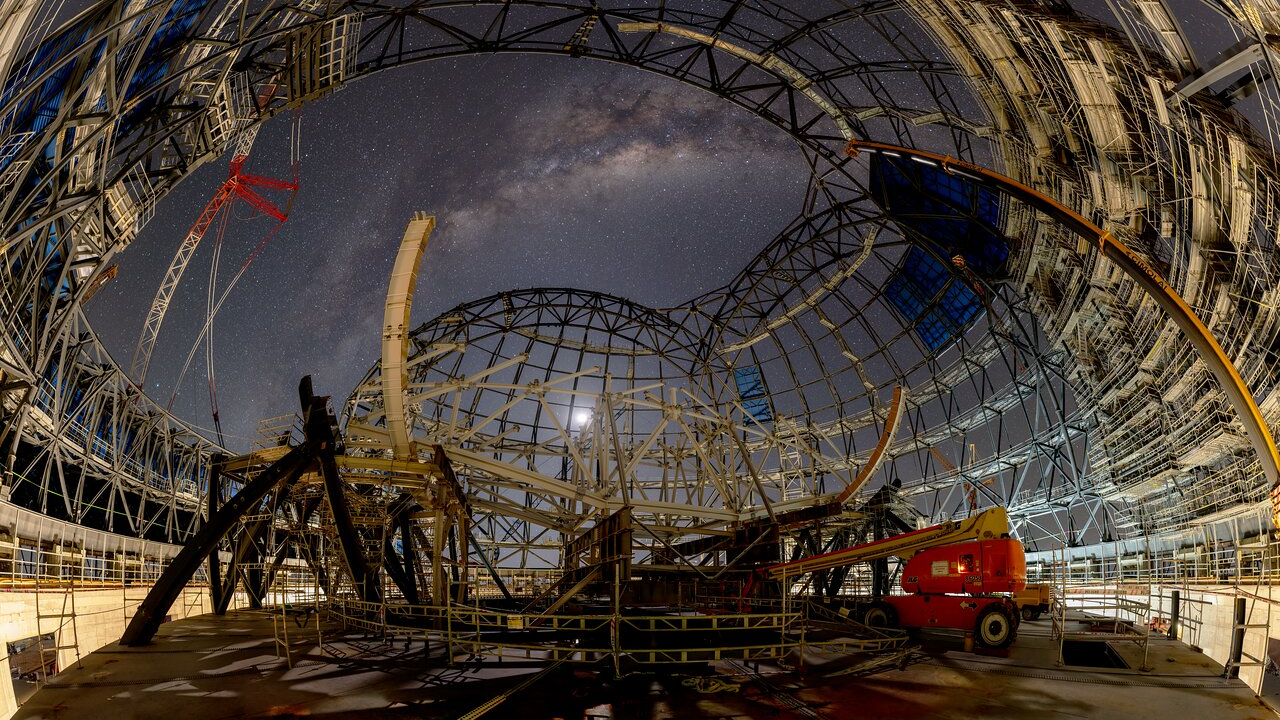
Construction of the Extremely Large Telescope has reached another milestone, with the completion of the dome's steel skeleton.
The European Southern Observatory's (ESO) Extremely Large Telescope (ELT) — the world's largest visible- and infrared-light telescope — is under development on the Cerro Armazones mountain in Chile's Atacama Desert and is expected to see its "first light" by 2028.
ESO recently shared a stunning new nighttime photo taken from inside of the dome on April 3. The photo captures the telescope's progress with the Milky Way's heart overhead and the rest of the night sky illuminated by shining stars.
Related: Scientists bury time capsule to celebrate upcoming Extremely Large Telescope (photos)
"Growing is hard work," ESO officials said in a statement releasing the new photo. The ELT is "taking a well-deserved night-time rest."
The structure, measuring 262 feet (80 meters) high and 289 feet (88 m) wide, is now being outfitted with dark blue panels, which serve as a protective insulated cladding. The panels will cover the entire dome and consist of different layers, including the thermal insulation as well as an aluminum exterior sheet.
The telescope will operate at night, when the dome opens its large observing slit to scan the sky. During the day, when the dome is closed, air conditioning will help protect the telescope from the extreme environment of the Atacama Desert.
"This will keep the air inside the dome at the same temperature as the outside environment, minimizing turbulence that could otherwise blur the images the ELT will capture," ESO officials said in the statement.
The recent progress photo also shows a central concrete foundation called the azimuth structure, which will protect the telescope from vibrations propagating through the ground. The foundation will hold the telescope and its array of scientific instruments for a long cosmic exploration road ahead.
As ESO says, "in the future, the telescope will be working nights."







